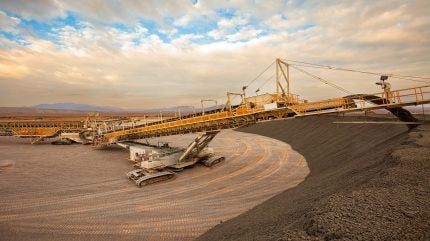
Last week, I wrote about the enormous numbers of oil wells and permits that exist on US federal lands. My research revealed that nearly 90% of these nearly 245 million acres lack durable protections from oil and gas leasing, mining, and other extractive industries. I called out the Biden administration and argued that fossil fuel companies should be paying robustly for oil leases that allow them to drill on public lands.
I guess they heard me. 🙂
The Biden administration has proposed a rule that would raise the royalties fossil fuel companies pay to pull oil, gas, and coal from public lands. It’s the first time since 1920 that they’ve been made to pay their due. They’ll also be required to increase by a factor of 10 the cost of the bonds they hold before they start drilling on public lands.
Then again, the damage that these climate polluters is exacting on the planet is so extensive that these charges are barely the beginning of the reparations the fossil fuel companies need to be shelling out.

Here are the 3 major components of the proposed US federal rule to elevate the costs of drilling on public lands. It would:
- reflect provisions of the Inflation Reduction Act (IRA) pertaining to royalty rates, rentals, and minimum bids;
- update the bonding requirements for leasing, development, and production; and,
- also improve the BLM’s leasing process to ensure proper stewardship of public lands and resources and would revise some operating requirements.
The Bureau of Land Management (BLM) believes that these and other proposed changes would help ensure that reclamation costs reside primarily with oil and gas lessees, operating rights owners, and operators — not the US public. Moreover, In the same vein, the BLM is proposing to adjust its cost recovery mechanisms so that project applicants provide a more appropriate share of upfront costs. Finally, the idea is that such changes encourage diligent development of leased lands and direct leasing to areas with fewer multiple-use conflicts and a greater likelihood of achieving responsible development.
Environmental groups were generally optimistic about the proposed rule while also admonishing the Biden administration to do more to restrict drilling on federal lands, citing the conflict of leasing public lands for fossil fuels while facing climate and biodiversity emergencies. “The Biden administration is recognizing that over a century of business as usual by the oil and gas industry is incompatible with a world being ravaged by climate change, a crisis induced primarily by the industry itself,” states Josh Axelrod, senior policy advocate for NRDC. He adds, “What is truly key moving forward is for the agency to forge an approach for measuring and mitigating the program’s impact on climate.”
Drilling down, the proposed rule would:
- increase the minimum bond paid upon purchasing an individual drilling lease to $150,000 from $10,000;
- elevate the cost of a bond required upon purchasing a drilling lease on multiple public lands in a state from $500,000 from $25,000;
- eliminate an existing national bond under which companies can pay $150,000 as insurance against damaged, abandoned wells anywhere in the country;
- help steer oil and gas development away from important wildlife habitat or cultural sites, and, instead, toward lands with existing infrastructure or high production potential; and,
- require the agency to prioritize approvals of new permits in areas where drilling is already taking place, as opposed to more pristine lands.
The changes could take effect as soon as 2024. The Interior Department estimates the new rule would increase costs for fossil fuel companies by about $1.8 billion between now and 2031 — and even possibly more after that. These monies would be apportioned so that about half goes to states, a third to water projects in the West, and the rest would be split between the Treasury Department and Interior.
Why Raising the Price of Drilling on Public Lands is Important
“The Interior Department has taken several steps over the last two years to ensure the federal oil and gas program provides a fair return to taxpayers, adequately accounts for environmental harms and discourages speculation by oil and gas companies,” said Laura Daniel-Davis, the Interior Department’s principal deputy assistant secretary for land and minerals management. “This new proposed rule will help fully codify those goals and lead to more responsible leasing and development processes.”
In response, the American Petroleum Institute (API) released commentary that referred to responsible development of federal lands as “critical for meeting the growing demand for affordable, reliable energy while reducing emissions.” The API went on to describe the proposal from the Department of the Interior as one more in a series of actions “to add even more barriers to future energy production.” The proposal, they claim, makes production unpredictable and “may further discourage oil and natural gas investment.” This reaction fails to acknowledge in any way the culpability that the API holds for climate emissions.
It’s important to remember that some of these proposed changes were mandated by the 2022 Inflation Reduction Act, which directs the Interior Department to increase the royalty rates paid by companies that drill on public lands to 16.67% from 12.5%, and to increase the minimum bid at auctions for drilling leases to $10 per acre from $2 per acre, among other provisions. The 12.5% royalty rates have been in place since 1920.
The law also orders the agency to set a minimum rental rate of $3 per acre on public drilling leases in the first two years after a lease is issued, rising to $15 per acre after 10 years, and to establish a new fee of $5 per acre for companies to formally register their interest in leasing public land for drilling.
Oil and gas operations account for around 15% of total energy-related emissions globally, the equivalent of 5.1 billion tons of GHG emissions. In the International Energy Agency’s (IEAs) Net Zero Emissions by 2050 Scenario, the emissions intensity of these activities falls by 50% by the end of the decade. An IEA analysis concludes that oil and gas producers have a clear opportunity to address the problem of emissions from their activities through a series of ready-to-implement and cost-effective measures. These include:
- tackling methane emissions;
- eliminating all non-emergency flaring;
- electrifying upstream facilities with low-emissions electricity;
- equipping oil and gas processes with carbon capture:
- utilization and storage technologies; and,
- expanding the use of hydrogen from low-emissions electrolysis in refineries.
Featured image courtesy of Pixabay/Pexels (CC0)
I don’t like paywalls. You don’t like paywalls. Who likes paywalls? Here at CleanTechnica, we implemented a limited paywall for a while, but it always felt wrong — and it was always tough to decide what we should put behind there. In theory, your most exclusive and best content goes behind a paywall. But then fewer people read it! We just don’t like paywalls, and so we’ve decided to ditch ours. Unfortunately, the media business is still a tough, cut-throat business with tiny margins. It’s a never-ending Olympic challenge to stay above water or even perhaps — gasp — grow. So …
Sign up for daily news updates from CleanTechnica on email. Or follow us on Google News!
Have a tip for CleanTechnica, want to advertise, or want to suggest a guest for our CleanTech Talk podcast? Contact us here.
Former Tesla Battery Expert Leading Lyten Into New Lithium-Sulfur Battery Era:
CleanTechnica uses affiliate links. See our policy here.




